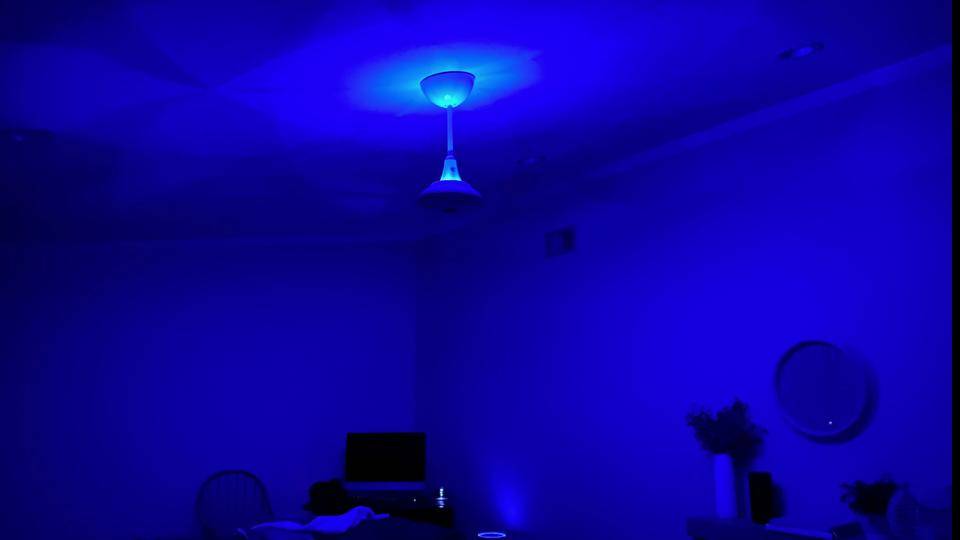
Step into the light…
Anthony Karcz
Updated 7/30: Removed Nest from the Haiku writeup. Google has discontinued their Nest integration.
Now more than ever, keeping things sanitized is on everyone’s minds. But wiping everything down with bleach isn’t practical (or even necessary in some cases) and hand sanitizer can only do so much.
UV-C has been gaining popularity for its sanitizing properties in recent years and more so in the past couple of months as consumer gadgets have started to embrace the tech. When properly utilized, UV-C can eliminate 99.9% of the pathogens it encounters, so it’s easy to see why everyone wants it and wants it now.
Plus there’s the added bonus that UV-C light doesn’t leave behind residue and is safe to use on electronics. If you’re looking to keep your gear safe, it’s a sure bet.
This is what I’ve been using to keep the germs at bay.
mophie UV-C Sanitizer and Charger
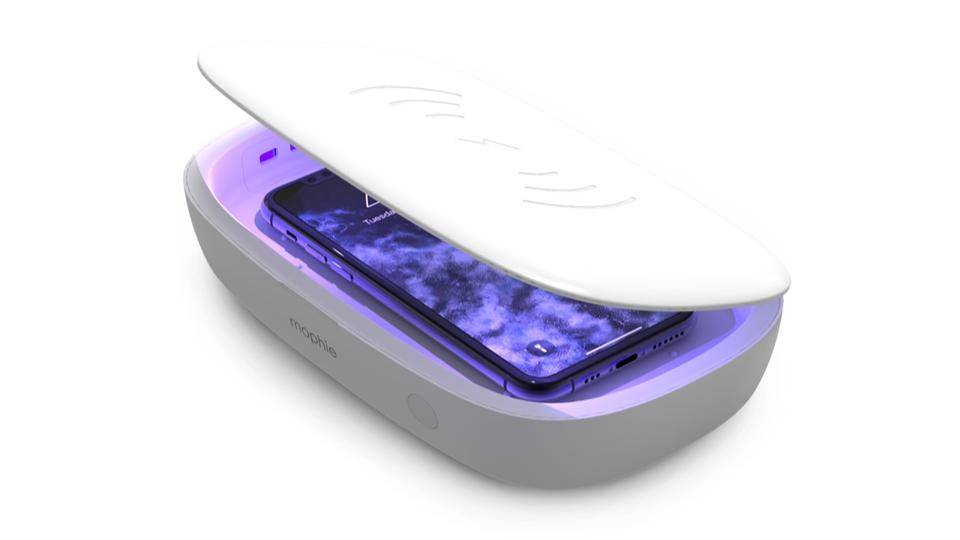
mophie UV sanitizer and charger
Zagg
The mophie UV-C Sanitizer and Charger is one of the simplest implementations of the tech on this list, for that reason, it’s also my favorite. There’s no installation involved, no specific use case. You just open the lid, put your phone or wallet or whatever inside, close the lid, and press the button on the side. In five minutes your item has been sanitized on all sides. The sanitization is heat-free, so really any non-porous item that you need to be sterilized can be tossed in as long as it fits.
The nice thing about the sanitizer is that it also has a 10W charger hidden in the lid. So you can top off your Qi-enabled phone or earbuds as well (but only from the outside of the case, you can’t charge and sanitize at the same time).
I’ve been using the mophie for a few weeks now and it’s become part of my family’s regular routine. Get home, toss your phone in, and go about your business until it beeps that the cycle is finished. There aren’t any fans or buzzing associated with the device. Indeed, if I didn’t lift the lid to peek on occasion, I wouldn’t even know it was working (it activates a purple glow inside the case while operational). My only wish is that it was just a little bit deeper so that it could fit my large car keys. But that’s a quibble with a device that’s perfect for what it does. You can pick one up for $79 on the mophie site.
LARQ

LARQ water bottle
LARQ
The vacuum-sealed LARQ water bottle keeps liquids hot for 12 hours and cold for 24. It’s not just lip service. I’ve woken up in the morning and taken a sip, surprised to find that the cold water I got from the fridge is just as cool as when I poured it in the night before.
The cap seals the bottle tightly, with no chance to misthread or knock it off accidentally. But beyond keeping liquid in, the cap holds another secret. In the bottom of the cap, there’s a UV-C light that you can activate to kill 99.999% of viruses and germs in your water (or just growing in the bottle).
No more musty water bottle. No more worrying over refilling your water when you’re on the go. Just fill up the bottle, screw the cap on, then press the button in the cap once to activate a 60-second cleaning cycle (for untrustworthy water sources, press twice to activate a 3-minute cycle). Drink as normal.
Every two hours, LARQ activates the UV-C light for a 10-second self-cleaning cycle (which may or may not prompt your kids to ask, worryingly, why your water bottle is glowing). This is to keep the bottle itself clean. It mostly works – I do find myself having to give it a good scrub on occasion, but that’s the water bottle life.
The tech in the LARQ cap is splashproof (a good thing, considering its application) and will last for a month on a charge with regular usage. I had my doubts, but after using it for just a few days, I see no reason to use anything else for my daily water. I’d love LARQ to build a tracking app so I could keep track of my water intake, but it’s in no way necessary. You can grab a LARQ from their site for $95.
LG Tone Free
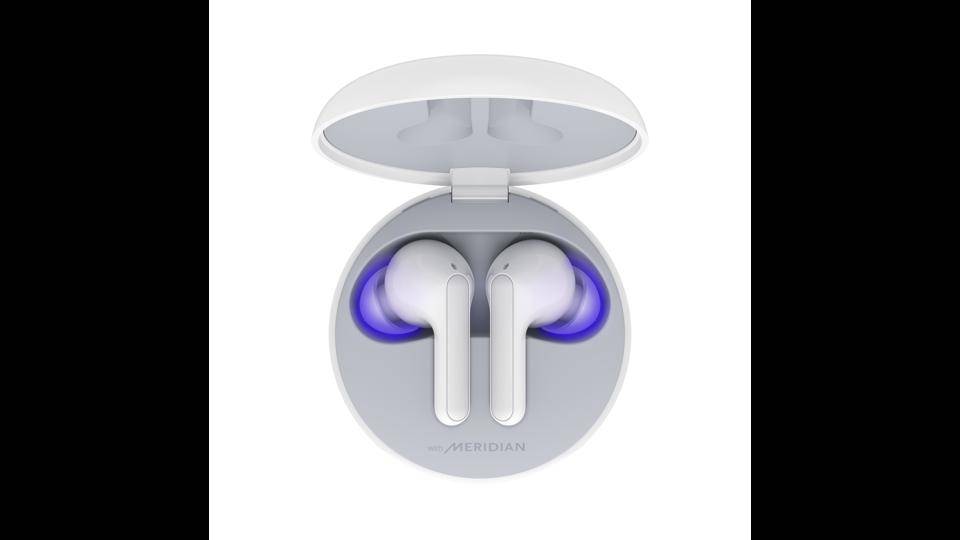
LG TONE Free with case
LG
Anyone who’s stuck a pair of wireless headphones into their ears knows that, well, your ears are gross. The LG Tone Free (really, did no one see the problem with that name?) sterilizes the earbuds via our old friend UV-C every time you drop them in to charge in the Qi-enabled case. Well, not exactly the entire earbud. The case is a little bit misleading. When you open it up, you’re greeted with a soft blue glow. This makes you think that everything that glow is touching is sanitized.
But UV-C is invisible and, in this case (heh), the UV-C LEDs are tiny and targeted, so really it’s less “the earbuds” and more “the little area inside the earbud around the speaker grill.” If you want to clean the outside of the earbuds as well, you’ll want to throw them in the mophie sanitizer.
Sound quality-wise, they’re nicely capable earbuds with an ambient sound mode. It makes them perfect for exercising outdoors where you need to keep an ear on traffic (both vehicular and foot). They’re IPX4 rated, so you don’t have to worry about getting them too sweaty or getting caught in a summer storm.
They’re comfortable in-ear and the tips are made from hypo-allergenic silicone. I have a slight allergy to some earbuds (au revoir AirPods Pro, my old friends), so having a pair I can wear all day without having to worry about an allergic reaction is a big bonus. They have fast charge capabilities as well, with five minutes giving you an hour of playtime. If you pair them with your phone you can use the app to find them if they’re lost and automatically pause playback when you take one earbud out.
The Tone Free with sanitizing case is shipping now for $150 and comes in black and white. Check their website to see if it’s in stock near you.
UVMask
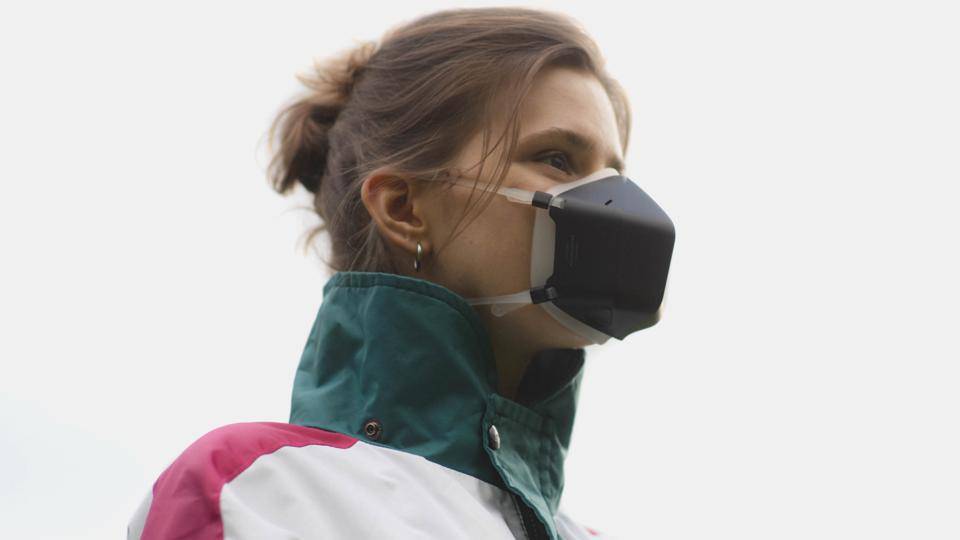
UVMask in black
UM Systems
So you can sterilize your phone, your water, your earbuds, how about the air you breathe? That’s the concept behind the UVMask by UM Systems. Currently in the last few weeks of funding on Kickstarter, their unique UV-C-enabled mask has already gotten the attention of over 10,000 backers.
The battery powered mask uses two methods to clean the air you breathe—a passive filter that can capture particles as small as 0.3 microns and two UV-C LEDs that sterilize the air that passes through a vortex chamber. These intense little lights have more than enough power to cook whatever makes it through the filter. The air you exhale is sterilized by the same UV-C vortex and vented out the sides—no more foggy glasses! The mask has been independently lab tested and the company is currently seeking certifications (and possible medical use applications).
The plastic mask is secured to your face with a silicon pad and a pair of adjustable straps (that may see an upgrade by campaign’s end), making it comfortable for all-day wear. The initial UVMask offering was only rated for 6 hours of battery life, but with $1.5 million in pledges, UM Systems has been able to increase the battery capacity for the mask (no word yet on how long, but hopefully it’ll be at least a full 8 hours or more). If you do run out of juice, you can charge up with a USB-C battery pack with fast charging.
The one caveat is that the filters the UVMask uses are proprietary. UM Systems recommends daily filter changes if you wear the mask all day (you can go longer between changes if you’re using it less). You’ll want to make sure you stock up when you pledge. The mask only comes in black or white (for now, there is a color yet to be unlocked in the campaign), but backers can get a variety of stickers to decorate the outer shell.
With over $2 million in funding already secured, the UVMask is the kind of Kickstarter that I feel secure in recommending. Speaking with the company, their supply chain is in place and ready to handle the large volume of orders that are coming their way. Will they hit their ambitious October delivery date? Given everything going on in the world, I’m shocked if I can mail a letter across town in a week. So I’m looking at that street date with a big grain of salt—but I do think UM Systems will deliver.
You can pledge on the UVMask right now starting at $100 (you can also get multi-packs for more). If you’re looking for video or a deeper dive into the tech, the Kickstarter page has a treasure trove of information.
Molekule Air Mini+
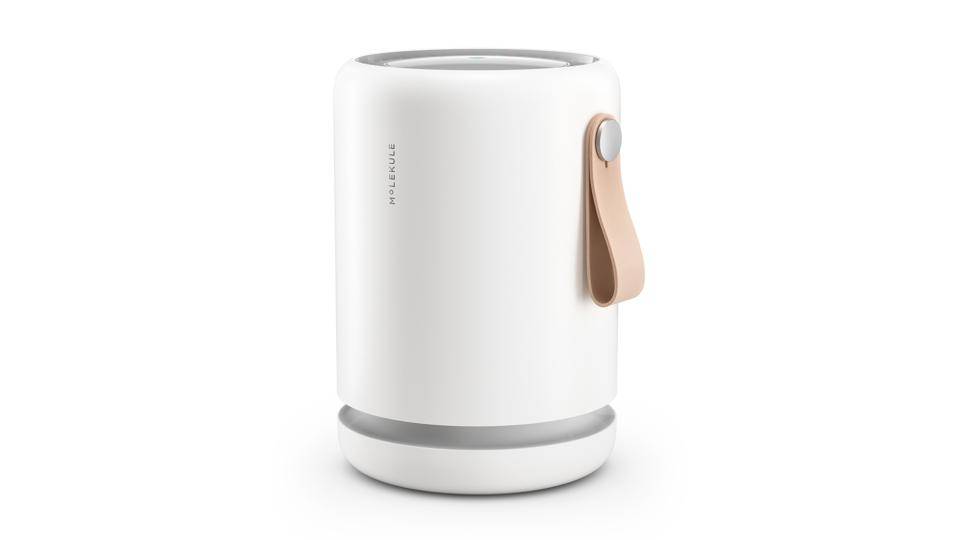
Molekule Air Mini+
Molekule
With a stylish white shell and vegan leather handle, the Molekule Air Mini+ is a great way to help sanitize the air you breathe with its combination of filtration and UV light-activated technologies (though UV-A instead of UV-C in this case, since the former is better at breaking down ozone).
Molekule’s patented air purifying technology captures particulate matter in a specially treated filter that combines photo-electrochemical oxidation (PECO) and HEPA into one unit. Then blasts those microscopic bits and bobs with UV light to break them down and render viruses and molds inert.
The Air Mini+ comes with an integrated particle sensor that detects the amount of particulate matter in its current location. Notice I said “particulate matter,” not “VOCs.” While the Air Mini+ still destroys VOCs, mold, bacteria, and viruses, it doesn’t try to pretend that it’s detecting these. VOC sensors are easily fooled, and there’s no way for an air filter, no matter how advanced, to detect bacteria, mold, and viruses in the air in real time.
Instead the Air Mini+ focuses on those particles that are easily detected, like pollen and dust, letting you know in the app and on the top of the unit with an LED indicating your current air quality, from green to yellow to red. In Auto Protect mode, the unit adjusts the Air Mini+’s fan speed automatically, making sure that your air stays clean, even if the amount of particulate matter in the air increases. Just be warned that this could mean the Mini+ will get extremely loud if it bumps itself up to higher speeds. You can also adjust the Air Mini+ manually, pressing the button on the top of the unit to cycle through air speeds.
What I like about the Mini+ (other than the fact it’s cleaning the air) is that, at just seven pounds, it’s not so big that moving it from room to room is a chore. Grab the leather handle and bring it with you as you change rooms. Just keep in mind that, since the Mini+ is a smaller unit, unlike the original Molekule Air, it’s ideal placement is in rooms that are 250 sq. ft. or less.
The Air Mini+ is available now on Amazon and the Molekule site. It’s $499, $100 more than the Mini. Filter replacements are $99 for a two pack and should last you a year.
Haiku UV-C Fan
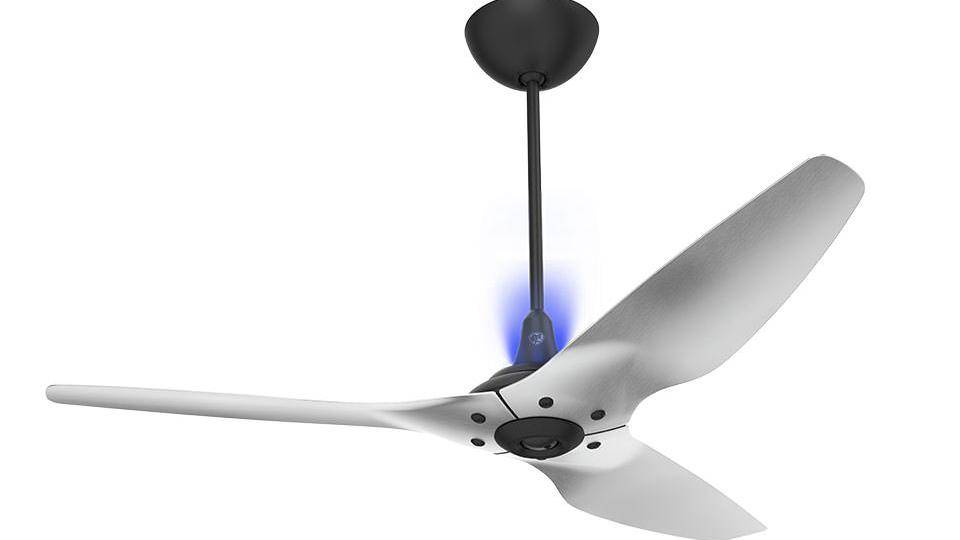
Haiku UV-C in black with silver airfoils
Big Ass Fans
But what if you’re not satisfied with cleaning the air a little bit at a time? What if you want all of the air in a room sanitized and you want it done now? Install one of Big Ass Fan’s new Haiku UV-C models and you’ll be able to do just that.
The Haiku UV-C is one of my favorite pieces of “tech that doesn’t look like tech.” Looking more like the propeller of some classic flying machine than your standard chipboard air stirrer.
The aluminum airfoils move enough air around that they should be called something other than “blades.” When I’m sitting under a fan in a 78 degree room and feel chilly enough to start looking around for a blanket, they’ve earned it. What’s nice is that you can get the airfoils in a wide variety of finishes. The driftwood model the company sent over blends nicely with any modern decor, but you can also opt for shiny metallic or matte finishes as well.
Installation is no more complicated than your standard ceiling fan. It’s a little easier, actually, since everything is laid out so nicely in the box with instructions that actually make sense. Once the Haiku UV-C is up, there are no pulls or switches. Instead, you’ll operate the fan with an optional remote control or the app.
From the app you can set up scheduling, set different modes, including one that mimics natural breezes by automatically varying the fan speed, and connect the Haiku to your ecobee thermostat (allowing it to automatically maintain your set room temperature), and integrate with Google or Alexa (no Apple Homekit, sadly). You can also enable SenseMe technology which turns the fan and UV light on or off depending on if people are in the room. With motion sensing activated and it connected to your smart thermostat, there’s practically no need for manual control.
The UV-C package (which you’ll install in place of the LED kit) points a ring of UV-C LEDs at the ceiling, creating a “kill zone” where it sanitizes the air circulated through the fan’s blades. It’s a method that Big Ass Fans developed while working in a Rwandan hospital where they discovered using fans to circulate air over UV-C lights could improve air turnover and kill airborne pathogens at the same time. Rather than just pointing LEDs at the ceiling and turning the fan on “high,” Big Ass Fans has done the research to figure out how to optimize circulation patterns so that, when the fan is operating, it’s directing airflow through the UV-C zone.
The LEDs emit a distinctive blue glow to let you know they’re active. It’s striking in a dark room (see the image at the top of the article), but not all that noteworthy when the room lights are on. If the glow bothers you, you can manually disable the UV-C LEDs in the app. The LEDs last about 9,000 hours, so it’ll be a long time before you have to replace the light ring.
None of this would be worth talking about, though, if the Haiku UV-C didn’t do a good job of keeping your home cool. Thankfully, it does that better than any ceiling fan I’ve ever used. With solid construction and truly smart operation, adding UV-C sanitization to the mix is just icing on the ice cream cake. Granted, with prices starting around $1,200 you’re going to pay more for the Haiku UV-C than any fan you’ve ever used, but the results can’t be denied. Learn more on the Haiku page.